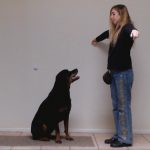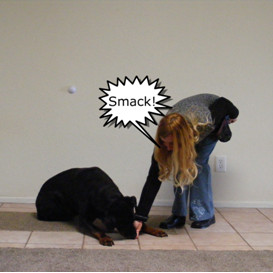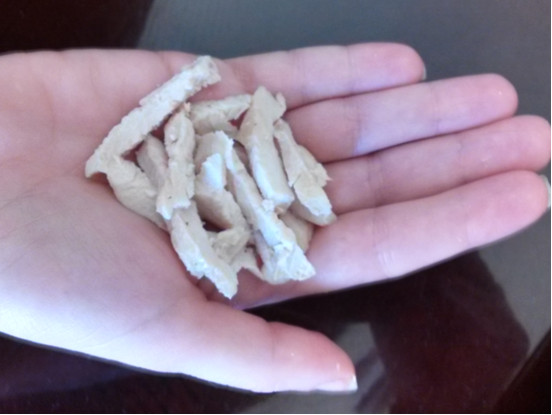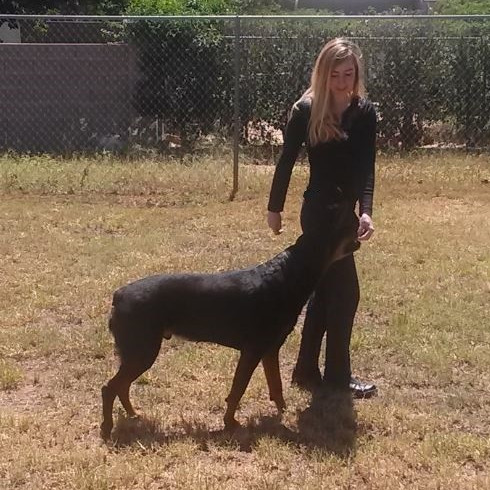Do you find yourself trying hopelessly to get your dog’s attention? Does “in one ear and out the other” sound familiar? Or does your dog find it easy to listen to you until he sees the dreaded mail carrier? Whatever the case, it’s important that our owners are able to capture and hold our dog’s attention. Just imagine the consequences if our dog ran onto a busy road and was not able to listen to us calling him back!
In this article, I will cover 5 simple tips you can apply immediately to help your dog become more attentive.
Brain Training
 Brain training is a super-effective way to increase your dog’s ability to pay attention to you!
Brain training is a super-effective way to increase your dog’s ability to pay attention to you!
Many of the games in my Brain Training for Dogs course are designed to improve your dog’s attentiveness. One of my favorites is “The Airplane Game,” which you can access for free. In this simple game your dog will learn the following important skills:
- How to pay attention to you on command.
- How to maintain focus on you despite distractions – unlocking the pathway to super obedience.
- How to use his hidden intelligence to figure out puzzles.
Watch me and Einstein complete this game:
The “Smacking Sound”
Wouldn’t it be great if there was a noise we could make at any time to get our dog to immediately pay attention to us? Well, fortunately for us there is, and it’s called the “smacking sound”! But before we can harness its power, we need to teach our dog that this particular sound = food.

To do this, with your dog in a quiet room, make a smacking sound as though you were kissing the air, then immediately give him a treat. It doesn’t matter what he’s doing when you give him the treat (so long as he’s not doing anything bad like tearing up the sofa), the idea is simply to show him that whenever he hears the sound, he gets treats. After doing this for a while, you should notice that your dog looks at you for his treat whenever you make the sound. With continued practice, you can start using the smacking sound in everyday life when you want to grab your dog’s attention!
Keep in mind, however, that the smacking sound may be less effective at times when your dog is too worked up. For example, if he has seen something outside that he reacts strongly to, your sound may go unnoticed. One remedy for this is the “Look at That” game found in my Brain Training for Dogs course. In “Look at That,” we will work specifically on teaching your dog to pay attention to the smacking sound despite strong distractions.
The Importance of Incentives

How would you feel about the idea of working without getting paid? This is exactly how our dogs may feel when we ask them to perform mundane tasks without rewarding them for their efforts! That is why incentives are so important in dog training.
There are many different types of incentives, but food rewards are the most common. These rewards are given to a dog whenever he successfully performs a certain action. So let’s say we just started teaching our dog to “sit” for the first time. When he sits successfully, we would reward his effort by slipping him a doggy biscuit or piece of kibble. Now, the next time we ask him to sit, he will be eager to do so because he knows that he will get something tasty in return!
In the Brain Training for Dogs program I cover techniques that allow you to stop giving your dog a treat every time he successfully performs a certain action, and also introduce other forms of reward.
Reward Voluntary Check-ins

When you are out in the yard with your dog, how often does he pay attention to you? Most likely, not very much, as he’s far too busy exploring the world with his powerful sniffer. Maybe it’s time for a little change…
Make it a habit when you are out in the yard to bring along some high-value treats (e.g. plain cooked chicken slices). Keep these treats handy in a pocket or treat bag. Now every time your dog happens to walk within arm’s reach of you, praise him and extend your hand to offer him a treat. If you do this often enough, positive reinforcement will work its magic and you’ll soon notice your dog checking in with you more and more. This is great news because it means he is learning that you are worthy of his attention!
Right Place, Right Time
Choosing to begin training sessions at the right place and time can play a big role in whether or not your dog is able to pay attention.
It’s best to avoid training your dog when you first come home from work and he is all eager and excited to greet you, or when he’s all hyped up and bouncing off the walls after mealtime. Instead, wait until your dog is calmer and more capable of focusing, and use these times to your advantage.
You may also want to avoid training a new behavior in an environment where there are lots of distracting sights, sounds, and smells (e.g. the yard), as this makes it harder for your dog to stay focused on you. Instead, try training in a quiet room at first. It’s also a good idea to avoid rooms with windows if your dog is easily distracted by things he sees outside.
NOTE: PLEASE Use the Older Post and Newer Post buttons just below comment box to navigate between posts.

1 comments:
This is a really nice post. You dog needs to be relaxed and playful all the times . If you found that your dog is remaining still all the times and not taking any part in fun then you should first get him some nice Gifts from Nandog. After that get him a nice personal space or a dog bed. That will be really helpful.
Post a Comment